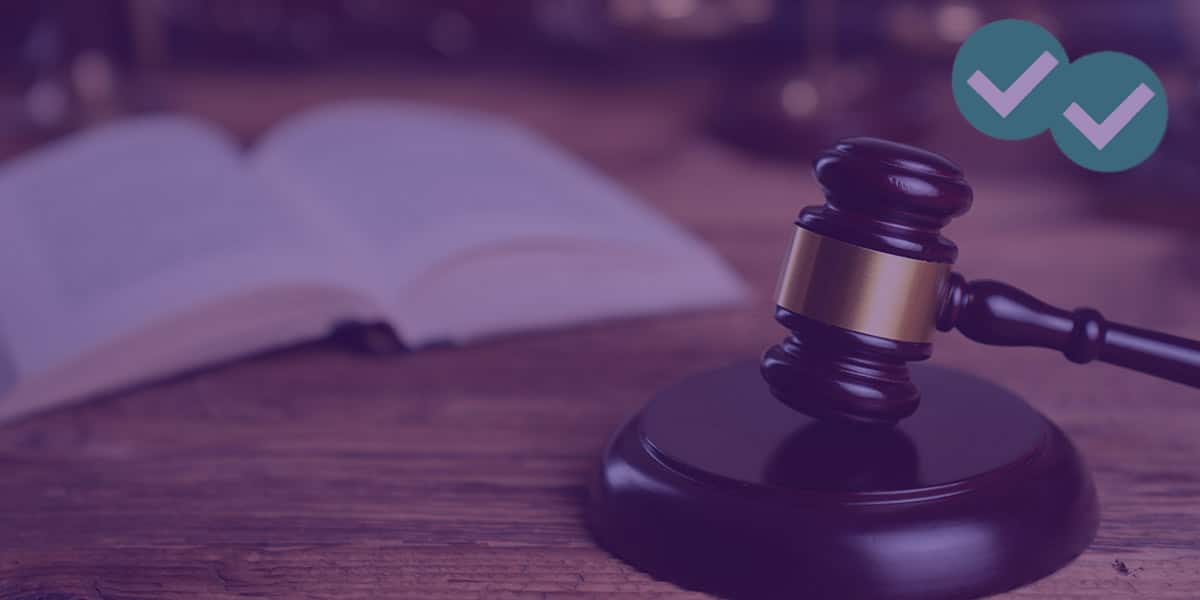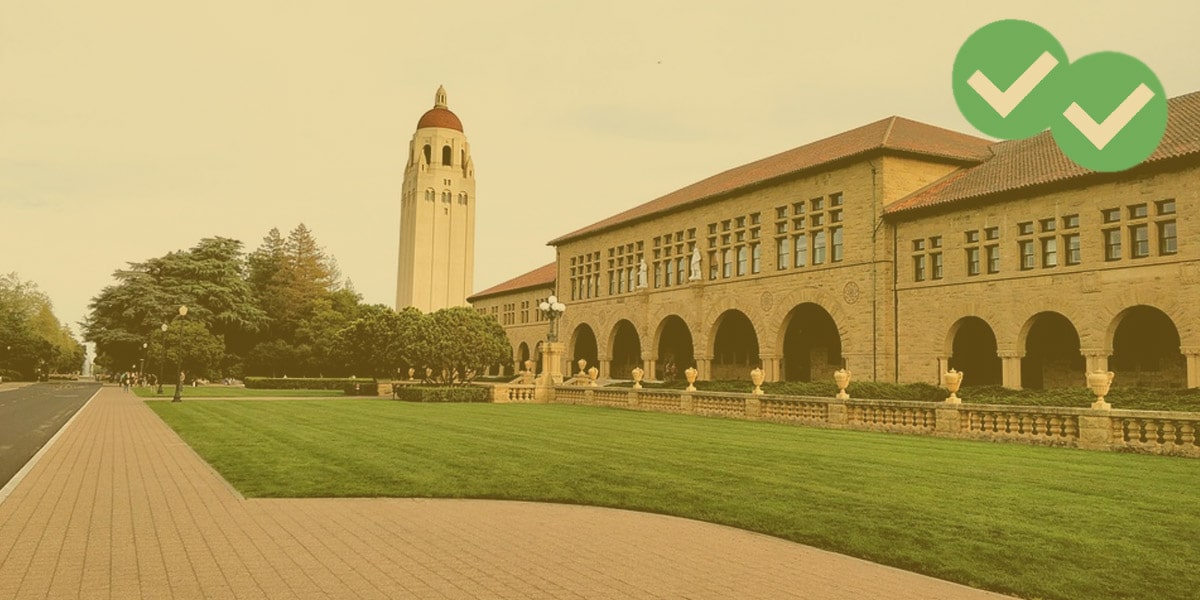
If you spend any time discussing law school admissions with other applicants, law students, or lawyers, you might hear the phrase “Top 14” or “T14 law schools”. What do these refer to? They’re a reference to the top 14 law schools in the annual law school rankings published by the U.S. News and World Report. These 14 schools are generally seen as the most prestigious and selective law schools. Attendance at a top 14 is often a reliable path to a job in Biglaw or to a federal clerkship or to other selective legal positions.
Here are the T14 law schools of 2024:
| Rank (2023) | School | Location | LSAT Median (2023) | GPA Median (2023) | Acceptance Rate |
|---|---|---|---|---|---|
| 1 | Stanford | Palo Alto | 173 | 3.92 | 6.90% |
| 2 | Yale | New Haven | 175 | 3.94 | 5.70% |
| 3 | University of Chicago | Chicago | 173 | 3.91 | 14.20% |
| 4 | University of Pennsylvania | Philadelphia | 172 | 3.9 | 9.70% |
| 5 | Duke | Durham | 170 | 3.85 | 10.70% |
| 6 | Harvard | Cambridge | 174 | 3.92 | 10.10% |
| 7 | NYU | New York City | 172 | 3.88 | 15.70% |
| 8 | Columbia | New York City | 173 | 3.87 | 11.90% |
| 9 | University of Virginia | Charlottesville | 171 | 3.94 | 12.90% |
| 10 | Northwestern University | Chicago | 171 | 3.89 | 15% |
| 11 | University of California, Berkeley | Berkeley | 170 | 3.83 | 12.50% |
| 12 | University of Michigan – Ann Arbor | Ann Arbor | 171 | 3.83 | 13.50% |
| 13 | Cornell University | Ithaca | 172 | 3.87 | 17.40% |
| 14 | University of California, Los Angeles | Los Angeles | 171 | 3.9 | 15.50% |
| 15 | Georgetown (usually ranked in the top 14) | Washington D.C. | 171 | 3.87 | 17.60% |
Although there’s nothing inherently special about the top 14 schools as opposed to the top 15, 16, or 20, the “Top 14” moniker stuck for a reason. As the U.S. News and World Report began to rank law schools, the same schools appeared in the top 14 almost every year. (In some years, Georgetown’s spot in the top 14 has been displaced by University of California – Los Angeles, but that hasn’t yet changed Georgetown’s inclusion in the “top 14” group of law schools.)
Breaking Down the T14 Schools
Since 1992, Yale, Harvard, and Stanford typically have been the top three law schools every year in the U.S. News rankings. Although Harvard and Stanford have switched places between 2nd and 3rd, Yale has consistently been ranked 1st. Because these three schools are more selective and prestigious than any other school, they are traditionally seen as belonging to a tier of their own called “HYS”. If you manage to get into “HYS”, you can basically consider your legal career made; almost any option in the legal world will be open to you.
The next tier is “CCN”, which consists of Columbia, Chicago, and NYU. These schools have historically been ranked fourth through sixth. CCN is slightly less selective and less prestigious than HYS, but these differences probably won’t matter unless you’re hoping to become a Supreme Court clerk or law professor.
The six schools that make up the HYS and CCN tiers are often known as the “Top 6”, because they are consistently the top 6 in the U.S. News rankings. Below the top 6, too much shifting happens in rankings to allow any other solid tiers to form. The schools ranked 7th through 14—typically University of Pennsylvania, University of Virginia, University of California – Berkeley, University of Michigan, Duke University, Northwestern University, Cornell, and Georgetown—are still considered highly selective and prestigious in the broader legal community and still have national reach when it comes to employment. If you attend one of these schools, you don’t have to worry about whether employers across the country know about or respect your school.
How the Best Law Schools in the US Get Ranked
So how exactly does U.S. News rank the law schools? According to their published methodology, the rankings are based on several factors:
- Quality assessment (40% of a school’s ranking)
- Selectivity (21% of a school’s ranking)
- Employment success (25.25% of a school’s ranking)
- Faculty, law school, and library resources (13.75% of a school’s ranking)
A number of these factors, such as quality assessment, are difficult for schools to change because they are based on things that are not truly under a school’s control. Quality assessment, for example, is primarily based on how other law schools, lawyers, and judges view the quality of the school. A law school admissions committee can’t do much to change what a lawyer who graduated in 1995 thinks about the school.
That’s why law schools focus their attention on the selectivity factor when it comes to improving their U.S. News ranking. This factor is based on the entering class’s median LSAT (and GRE), median undergrad GPA, and the school’s acceptance rate. These factors are easier for a law school to control. Every year schools will try to increase their LSAT and GPA medians by trying to attract applicants with stronger LSATs and GPAs and will regularly offer scholarships to high-scoring applicants.
How to Get into Top 14 Law Schools
How do you get into a Top 14 law school? Well as you’ve seen in the section above, law schools care a lot about the median LSAT and GPA. If a school admits a class with lower numbers than the year before, that could threaten its spot in the rankings, which in turn may make it harder in the future to attract the highest-scoring students.
So the number one factor when it comes to getting into a top 14 law school is getting as high an LSAT and GPA as you can. But, even the strongest numbers won’t be enough by themselves to ensure admission to T14 law schools. You also need to craft a solid application that convinces an admissions committee that you’ll be a valuable member of the class and have a promising legal career.
LSAT Scores and GPA
The lowest median LSAT score out of the top 14 schools is 170. Although that number might change from year to year, it’s generally going to hover between 168 and 170. Among the top 6 schools, the lowest median LSAT score is also 170. In other years it might be between 169 and 172. So if you’re aiming for a top 14 school, you’ll want to shoot for an LSAT at least in the high 160s. If you want a top 6 school, you’ll want at least a 170.
When it comes to GPA, there’s less of a split between the top 6 and the rest of the top 14. Instead, the more significant difference is between the top 3 (HYS) and the rest. HYS GPA medians are typically above 3.90. As for the rest of the top 14, the GPA medians are typically above 3.80, although certain schools such as Chicago and the University of Pennsylvania often will have higher medians. The takeaway for you as an applicant is that you should study hard and keep your grades up in undergrad. Applying with at least a 3.8 GPA will put you in a good position for the top 14 schools.
Despite the advice above, however, keep in mind that numbers aren’t everything for law school admissions. And, if you identify as an underrepresented minority, the published LSAT and GPA medians aren’t an accurate gauge for your chances of admission.
Improve your scores with Magoosh LSAT, you can choose between on-demand classes of a previous live class (which also includes all our lessons and practice questions) or access to the self-study option by itself.
Compelling Application
To have a solid chance at admission to a top 14 school, you’ll also need to craft a compelling application to back up your LSAT and GPA numbers. This means that your personal statement, supplemental essays, recommendations, and resume should come together to show how you’ll be a valuable member of the student body and have a promising professional future ahead of you.
Don’t just throw these elements of the application together at the last minute. Revise and proofread your resume well in advance of your application. Give your recommenders at least one or two months to write their recommendations and be ready to give guidance on the qualities that you’re hoping admissions committees will learn about you through the recommendations. Sometimes, it will help to give your resume to your recommenders and provide them with a brief statement reminding them of who you are and your future plans. If a recommender offers you the chance to write a first draft of the recommendation, accept it.
Start brainstorming and writing drafts of your personal statement at least one or two months before you want to submit your application, and build in enough time to have friends, family, or other people you trust to comment on drafts. When it comes to supplemental statements such as diversity statements, “Why X school?” essays, and explanatory LSAT or GPA addendums, you’ll similarly want to allow yourself plenty of time for revision.
Final Thoughts on T14 Law Schools
To sum up, don’t overlook these parts of your application, especially for the T14 law schools. In fact, you need to spend extra time on these elements to demonstrate what makes you stand out from the pack. And if you’re still unsure, carefully review which majors are best for law school and get the best grades you can.
Keep in mind that the top 14 law schools aren’t the “be all and end all” when it comes to law school admissions and a legal career. You can have an amazing career even if you go to a much lower-ranked law school, and you can still struggle if you graduate from a top 14 school. However, in the wider legal community, the top 14 are known to be prestigious and selective, and if you graduate from one, you won’t have to worry much about how employers view your school.





